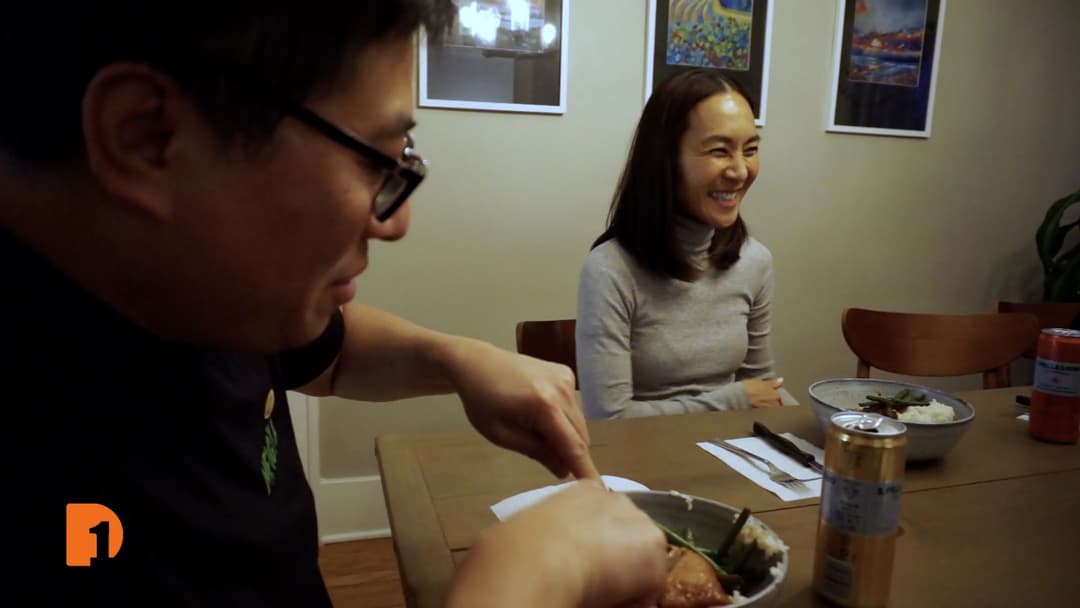Exiled to Motown Exhibit Tells History of Japanese Americans in Metro Detroit
Sep 28, 2021
An exhibit at the Detroit Historical Museum called “Exiled To Motown” explores the Japanese American experience here in Metro Detroit.
It’s a story of displacement and resettlement – Japanese Americans sent to internment camps during World War II, their choices were limited: stay in the camps with the people they knew, or head east and start new lives in places they’d never imagined.
One Detroit’s Bill Kubota knows something about that. His parents came here right after the war. He takes a look.
Full transcript:
An exhibit at the Detroit Historical Museum–Exiled to Motown—presented by the Japanese American Citizens League.
Celeste Goedert: I wanted to get involved and support whichever way I could because I knew that it meant a lot to my family but also to the broader community and I felt like it was a really important opportunity to delve into these histories in a way that felt accessible to us.
Celeste Goedert’s great grandfather Tadae Shimoura – one of the first Japanese here in 1919. He knocked on Henry Ford’s door and got hired as a company chemist.
Shimoura’s friend James Hirata worked for ford, too.
When Diego Rivera painted the Detroit Institute of Arts mural in the early 30’s, Hirata was part of it.
But it would be the 1940s – the mass relocation that brought a lot more Japanese Americans to Detroit.
Mika Kennedy: The incarceration in Japanese American history writ large often feels not only like a cultural story but like a Pacific Coast story and what I learned in coming here is that there’s a very vitally important part of that history that is kind of imbedded and integral to the Midwest.
Most came during and after the war.
John Okada wrote No-No Boy here, considered the first great Asian American novel.
Larry Shinoda helped create the Corvette Stingray and the Boss 302 Mustang.
Minoru Yamasaki designed the One Woodward building downtown and later, the Twin Towers in New York.
They were Nisei – U.S. born, Americans.
“Ni” – as in two – second generation.
Laura Misumi The way Japanese Americans count generations we start the first generation as the first generation in the United States, not necessarily born in the United States, so my great-grandparents came to this country as issei.
Issei: Ee as in ichi – one.
San: Three – sansei third generation – that’s me.
Laura Misumi: Usually I say I’m Yonsei or fourth generation Japanese American.
A wave of Japanese immigrants came at the turn of the last century, mostly to the west coast.
Consider the record of the Japanese people in America, it’s something to be proud of, making the western deserts into some of the most productive land in the world.
Then, the incarceration and resettlement that’s defined Japanese Americans to this day.
The way ahead, where does it lead? That’s what this young couple is wondering. Their life together lies in front of them.
Mika Kennedy: And resettlement are something that actually began as early as 1943 where the federal US government was looking for places that they could relocate Japanese Americans to out of these incarceration camps without returning them to what was then termed the western exclusion zone.
Many hundreds came here, you could say – exiled, to Motown.
On display: artifacts of displacement – heirlooms from the old country, the new country, things crafted in the camps – items saved by Goedert’s great-aunt Toshi Shimoura.
Celeste Goedert: It is believed by some of my family members that this is the very suitcase and actually the only piece of luggage that Toshi was able to carry out of Topaz incarceration camp in Utah when she was moving to Michigan.
Mary Kamidoi: I was born in Stockton, California and when I was eleven, we got put into camp.
Mary Kamidoi told One Detroit her story at a gathering a before the pandemic – her family sent to a camp in Arkansas.
Mary Kamidoi: Our family and twelve others were the last people to leave the camp and these people didn’t have a place to go either so they ended up out in Missouri and talk about discrimination, oh, they never saw people that looked like us.
Kamidoi and her sister found their way to Detroit, both working in an office at ford motor company.
Mary Kamidoi: When I was at Ford’s, I had to go to the general manager because everybody was so discriminating against me and my sister. And they didn’t trust us. Every time we got up from our desks somebody would follow us. So, one day this stupid jerk that did that all the time to me, I went to the lady’s room and he had to go over to the men’s room and I said, ‘here this is where I’m going into, you want to come in?’ ‘Oh, oh no’ and he stopped following me.
The headline: Transplanted nisei find city kind and considerate.
But Mary Kamidoi was deterred from buying a house in Dearborn – so she rented one on Grand Boulevard next to Hitsville, USA.
Mika Kennedy: On one hand we had Japanese Americans who were being touted as these model newcomers to the city who are going to contribute to the society of Detroit but also had instances where they were prohibited from buying property or from living in certain neighborhoods.
The curators see the resettlement curiously deliberate – many came from tight-knit communities – places like little Tokyo in Los Angeles.
Here they’d spread out across metro Detroit.
Mika Kennedy: If they intermingled with the Midwest which here is coded as being the White Midwest, then there would be no Japanese American community to you know, feel threatened by.
Celeste Goedert: They were really really trying to strategize and craft a way that Japanese Americans would assimilate and not talk to each other.
An article tells how they found success here – to the curators it seems to imply its because of their inherent ‘racial qualities’ that others who’ve come to Detroit might not have.
Celeste Goedert It’s like watching the model minority myth crafted before your eyes.
Another headline: ‘set to stay’ – but many would return to the west coast in the decades since.
The 1980s – more history – with Japan blamed for the demise of the U.S. auto industry – a concern for all Asian Americans around here
Vincent chin, a Chinese American was killed as Japan-bashing became the rage.
Mika Kennedy: And in that moment, I think it became clear for Asian Americans living in Metro Detroit that the distinctions between our communities, under the hue of White supremacy ceased to matter.
This was when the redress movement gained traction – demands the government officially apologize for the mass incarceration.
Mika Kennedy: The Japanese American Citizens League Detroit Chapter president at the time wrote a letter to Ronald Reagan and said that it may feel that World War II is part of some distant past but when we see what happened for instance to someone like Vincent Chin, that past is not distant and that these things are connected.
President Reagan signed the civil liberties act of 1988.
Japanese Americans who went to the camps received $20,000 each.
Celeste Goedert: It’s easy to look back and like ‘oh so redress happened and that was like that was awesome.” But that was years and years of organizing, very hard labor of having to work with the U.S. government which I’m sure was very retraumatizing for a lot of families.
Along with the history, the exhibit brings us back to today.
Laura Misumi There are many more Asian Americans moving into the city.
Laura Misumi is a local activist.
Laura Misumi: There’s kind of a wave of more kind of professional young professional millennial generation of Asian Americans that are moving into the city downtown area but not, I wouldn’t say a whole community, you know just kind of individuals.
Now, there’s Tsuru for Solidarity – a fight against the mass incarceration of immigrants and refugees – symbolized by the folded cranes.
Celeste Goedert: One of the larger points we’re trying to get at continually through this exhibit is as a Japanese American person you can look at your own family history, you can look at our broader history and maybe decide to keep your head down but I think our hope is that you let it politicize you and realize that you do have a responsibility to those other communities and that we all are connected in building this better future that we’re all hoping for.
Subscribe to One Detroit’s YouTube Channel & Don’t miss One Detroit Mondays and Thursdays at 7:30 p.m. on Detroit PBS, WTVS-Channel 56.
Catch the daily conversations on our website, Facebook, Twitter @DPTVOneDetroit, and Instagram @One.Detroit
View Past Episodes >
Watch One Detroit every Monday and Thursday at 7:30 p.m. ET on Detroit Public TV on Detroit Public TV, WTVS-Channel 56.
Stay Connected
Subscribe to One Detroit’s YouTube Channel and don’t miss One Detroit on Thursdays at 7:30 p.m. and Sundays at 9 a.m. on Detroit PBS, WTVS-Channel 56.
Catch the daily conversations on our website, Facebook, Twitter @OneDetroit_PBS, and Instagram @One.Detroit
Related Posts
Leave a Reply
Your email address will not be published. Required fields are marked*


























